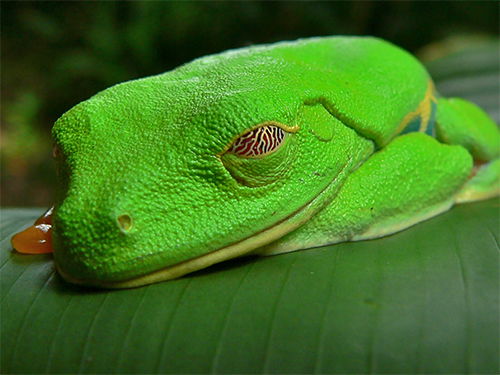You Lookin’ at Me?
Careyjamesbalboa (Carey James Balboa), Public domain, via Wikimedia Commons
Red-Eyed Tree Frog
on September 1, 2018Whoever named the red-eyed tree frog had a flair for the obvious. Those startling orbs are hard to miss—and that’s a problem. How do you keep an eye out for predators if your eyes stand out to predators?
The solution is an extra pair of transparent eyelids, or nictitating membranes. (Some names have to be difficult.) They camouflage the vibrant red beacons behind them. So the frog can watch for predators without screaming, “Look at me!”

Red-eyed tree frog's eye membrane
Bernard DUPONT from FRANCE, CC BY-SA 2.0 https://creativecommons.org/licenses/by-sa/2.0, via Wikimedia Commons
Well, why did God create those giveaway colors in the first place? Biologists believe it’s part of a strategy called startle coloration. The frog’s green body matches the leaves where it lives. Not so its orange feet, bright blue sides, . . . and the eyes. When the frog sleeps during the day, its colorful feet and sides are concealed—nothing to see here, just another leaf. But if it sees a predator, the bright eyes snap open and the vivid sides and feet pop into view. Startled, the predator hesitates, and the frog makes its escape.
Escaping predators wasn’t necessary before sin entered the world. Since the beginning this frog’s colors have served a nobler purpose—to be a beautiful reminder of the Creator.
This article was taken from Answers magazine, March–April, 2018, pg 28.
- © 2024 Answers in Genesis
- Privacy Policy
- Contact
- About
